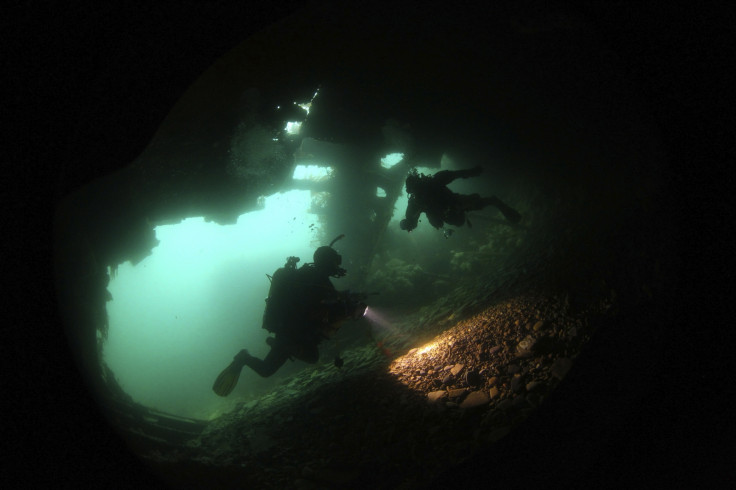HMS Victory: Archaeologists reveal 'real reason' behind disaster

British marine archaeologist Dr Sean Kingsley and his team have claimed that the 18th century British ship HMS Victory sank "probably because it was built from poor-quality timber".
The incident is regarded as one of the worst maritime disasters for the Royal Navy when HMS Victory, the 100-gun first-rate ship, sank with the loss of her entire crew while returning to England on 4 October, 1744.
The Independent quoted Dr Kingsley as saying: "When the pride of Britain sank, the Admiralty was in a state of denial over what caused the disaster. Based on wreckage washed onto the Channel Islands, the Casket's lighthouse keeper was falsely blamed, and then the mighty storm was made the scapegoat. Our latest archaeological and historical research now shows for the first time that the Admiralty was well aware that the central culprit was human error and a system failure at the heart of the establishment, a scandal hushed up for centuries."
The study of the consultant with Odyssey Marine Exploration and chief liaison officer of the Maritime Heritage Foundation has been published on the Victory 1744 website.
In the study Dr Kingsley has said: "Behind the menacing climatic impact of the storm that damaged large parts of Admiral Sir John Balchen's squadron in early October 1744 stood a series of man-made problems that are likely to have contributed to the sinking of the Victory.
"Wood accessibility deficiencies, mild winters, limited timber seasoning, poor wood rotation management and insufficient ship ventilation may all have played a role in the flagship's structural vulnerability. The most grievous concern, however, was the question of unharmonious proportions combined with cannon crowding on light decks that made English warships crank, expressed with the ultimate ferocity by Edward Vernon."
"...the Victory exhibited great fullness at her height of breadth. The escutcheon and taffarel-standards on her poop-royal framework made her 2.5ft higher above the gundeck than on French First Rates. The height of the stern and treble balconies made the Victory unusually heavy and high. The flagship's upper works were scarcely suitable for her lower body. She was deep waisted with much sheer (acutely angled hull). The vessel lacked roomliness and strength of decks. There is no evidence the Victory's beam was ever increased by girdling [which could have worsened the situation on the night of the disaster]."
Odyssey Marine Exploration, a Florida-based firm, had on 1 February, 2009 claimed that it had found the wreckage of HMS Victory in May 2008, around 264 years after the incident. The firm had recovered two of the one hundred bronze cannons from the wreck in 2008.
Later, investigations were conducted which confirmed that the wreckage was of the First Rate English warship Victory, which was believed to have run into the Casquets, as the fleet reached the English Channel on 3 October, 1744.
In January 2012, it was reported that the remains of HMS Victory were to be salvaged from the sea bed. The wreck was handed over to the Maritime Heritage Foundation and Odyssey Marine Exploration carried out the recovery.
© Copyright IBTimes 2024. All rights reserved.






